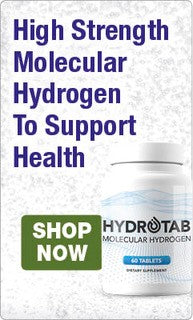Many of us associate water contamination with the Third World. However, unless you’re using a high-quality tap water filter you’re at risk of drinking water that is far from pure.
While tap water in the UK is cleaner and fresher than in many parts of the world, pollutants are not uncommon.
Whether you’re concerned about lead leaching, chlorine, fluoride, microplastics or any other unnatural component of drinking water, you’ve every right to ensure the water you’re sipping every day meets your approval.
1. To Remove Heavy Metals
Many people still have lead pipes in their homes because, prior to 1970, most underground service pipes connecting the street’s water main to your tap were made from lead. Thus, the risk of lead contamination is very real for those residing in older properties.
The specific health risks associated with an accumulation of lead in the body should never be underestimated. Younger people are particularly vulnerable due to the metal’s damaging impact on mental development, but truthfully no-one should be apathetic about ingesting ultimately poisonous lead particles.
If you’re unsure whether your property has lead pipes, you can request for the water company to test the water at your tap; companies will typically provide a report of any such analysis in your local area free of charge, upon request.
Although a 2013 study found lead consumption from drinking water to be “generally low and unlikely to have a significant impact on human health when considered in isolation,” there are many ways we can inadvertently ingest lead, such as from inhaling dust that contains it or handling toys and other household items painted before 1976.
The Medical Research Council also states that there is “no evidence of a safe level” for lead in the human body.
Of course, lead is not the only heavy metal you should be wary of. While developing countries are most affected by heavy metals in drinking water, traces of cadmium, chromium, mercury and even arsenic have been found in water tested in the United Kingdom and Europe.
Heavy metals can work their way into your tap water via industrial, municipal or urban runoff.
2. To Remove Bacteria
Many people were stunned to learn, just a couple of years ago, that their tap water could be home to millions of bacteria.
Although the Swedish researchers involved in the study did not deem the microscopic bacteria to be harmful, illnesses occur from harmful microorganisms in drinking water every year.
One such bacteria, M. Avium paratuberculosis (MAP), may be leaching into the domestic water supply via run-off from land into rivers and groundwater, and another – a protozoan called cryptosporidium – is known to cause gastrointestinal upset.
Although efforts are made to ensure UK tap water is free from harmful bacteria, United Utilities – the country’s largest listed water company – have said “it is impractical to analyse drinking water directly for the wide range of pathogens that could be present.”
3. To Remove Hormones
We have blogged before about hormones in tap water, and it’s yet another reason why some people elect to install a high-quality filter.
Traces of hormones, including endocrine-disrupting birth control hormones (estrogen), have been discovered in urban and suburban water supplies in Britain and further afield, suggesting they are beyond the scope of municipal filtration systems.
Synthetic estrogen is especially damaging, as it has been shown to wreak havoc on the reproductive systems of fish, leading to offspring sporting both male and female sexual organs. It has also negatively impacted the fertility of male fish.
A University of Pittsburgh study, meanwhile, learned that human breast cancer cells grew twice as rapidly when exposed to estrogen sourced from catfish snared close to untreated sewage overflows.
The question, then, is obvious: why drink water which may contain traces of endocrine-disrupting hormones – hormones that could increase cancer risk and reduce male fertility? Hormones that disrupt the natural balance of hormones in the body?
With sewage processing for estrogen removal notoriously difficult, the potential dangers of consuming even low concentrations of estrogen via tap water are clear.
4. To Remove Microplastics
Microplastics in tap water is another subject we have covered in our blog, although the scale of the problem only really came to light last year.
An investigation by Orb Media found that over 80% of tap water samples collected on five continents tested positive for plastic fibres. This included almost three-quarters of samples collected from water supplies throughout Europe.
Because the phenomenon has only recently come to light, no-one is yet clear on exactly what harm could come from ingesting microplastic fibres throughout one’s lifetime. However, it does not take a rocket scientist to speculate that the outcome is unlikely to be positive.
After all, non-biodegradable plastic is made from toxic compounds such as BPA (another endocrine disruptor) and has been shown to release toxic chemicals known to cause cancer and other illnesses.
Moreover, microplastics have a habit of absorbing toxic elements and can attract bacteria (see #2) from sewage. As noted in the Orb Media report, there is evidence to show that microplastic particles can penetrate the intestinal wall, travel to organs and penetrate cells.
According to a 2017 report published in the peer-review journal Environmental Science & Technology, “Although microplastics and human health is an emerging field, complementary existing fields indicate potential particle, chemical and microbial hazards.
“If inhaled or ingested, microplastics may accumulate and exert localized particle toxicity by inducing or enhancing an immune response.
“Chemical toxicity could occur due to the localized leaching of component monomers, endogenous additives, and adsorbed environmental pollutants.
“Chronic exposure is anticipated to be of greater concern due to the accumulative effect that could occur.”
Bottled water may seem like a valid solution, but a 2018 test of major brands found that “nearly all of them” contained microplastics. Analysis uncovered an average of 10 particles per litre, each larger than the width of a human hair.
Using a tap water filter to remove this pervasive material is a no-brainer.
5. To Remove Chlorine and Chloramine
Water is of course local, running as it does from the municipality’s supply. Water quality therefore varies depending on where you live (rural or urban area), the filtering processes in place etc.
You’ll find chlorine or chloramine in much of the tap water available throughout Britain, as well as in Europe and the United States.
Chlorine is used by the water industry to reduce waterborne pathogens, however aside from many people being sensitive to its unpalatable taste and smell, there are concerns that it should not be ingested even in modest concentrations (most water companies aim to keep the level below 1 mg/litre).
Research conducted by universities in Taiwan and Birmingham found that expectant mothers could expose themselves to serious risks by drinking chlorinated water, due to chemical by-products of water chlorination called trihalomethanes (THMs).
THMs were linked to three separate birth defects, significantly increasing the risk of holes in the heart, cleft palates and anencephaly (the absence of a major portion of the brain and skull).
Chlorine has also been linked to a heightened risk of cancer. Even showering and swimming increases one’s risk.
As well as a water filter to remove chlorine from the tap, you might consider a dechlorinating shower filter.
Chloramination is another method of treating drinking water, widely practised in the UK. A combination of chlorine and ammonia, it offers more stability than chlorine and lasts longer in the water system.
However, it has also been shown to corrode ageing lead and copper pipes/valves, thereby causing metals to leach into tap water.
In common with chlorine, chloramines entail a cancer risk by forming a great many toxic byproducts, including chlorine dioxide, iodacetic acid and the carcinogen N-nitrosodimethylamine (NDMA). Anecdotal evidence suggests a link between chloramines and dermatological, respiratory and digestive issues.
Campaigner Denise Johnson-Kula, president of Citizens Concerned About Chloramines, estimates that around 30% of people encounter side effects “within one month” of their cities switching to chloramines.
Rather than industrially treating water with chemicals like chlorine and chloramine, some alternative filters remove pollutants via methods such as carbon adsorption and enhanced sedimentation. This is becoming an ever more attractive option for people concerned about the consequences of ingesting both disinfectant chemicals.
6. To Remove Fluoride
Fluoride is a rather touchy subject; some people believe it is beneficial (specifically for dental health) while others consider it a form of mass medication forced upon a captive, docile public.
This polarising response means that initiatives seeking to commence the fluoridation of formerly non-fluoridated areas provoke a hostile response from citizens’ groups.
Indeed, no new fluoridation schemes have been approved in Britain for two decades. That said, 11% of Brits still receive artificially fluoridated tap water, mostly in the West Midlands and the North-East. 75% of Ireland’s population also receive fluoridated water.
One outspoken critic of water fluoridation was Barry Groves, researcher and author of Fluoride: Drinking Ourselves to Death? According to Groves, “Fluoridation is the longest, most expensive and most spectacularly unsuccessful marketing campaign ever to come out of the United States.
“This is an example of a cynical alliance between industrial leaders, mainstream science and the politicians we elect, which shows complete contempt for public health and welfare.”
If you live in a fluoridated area and want to avoid it, you have three options: move; drink bottled water; or install a water filter.
7. To Remove Pharmaceutical Compounds
Yes, there are drugs in your drinking water. According to a 2016 review carried out by researchers at Anglia Ruskin University in Cambridge, “current drinking water treatments cannot completely remove some drugs of abuse.”
Trace levels of compounds “have the potential to bioaccumulate and be toxic to humans.”
So which pharmaceuticals are we talking about here? At a glance they include antibiotics, psychoactive substances like benzoylecgonine (the metabolised form of cocaine), painkillers such as ibuprofen and paracetamol, beta-blockers, ACE inhibitors, dishwasher detergent chemicals, even tranquillisers.
The situation isn’t much better Stateside: a review published in February 2017 found a staggering 118 pharmaceuticals in drinking water samples from 25 treatment plants.
Perhaps the largest concern is the soup effect. Traces of this pharmaceutical drug laced with traces of that, mixed with synthetic hormones, microplastic fibres, bacteria, protozoa and heavy metals equals…what exactly? We simply do not know.
A brew not naturally intended for human consumption, of that we can be sure. And we cannot rule out that this bizarre concoction is interacting with the medication we’re intentionally taking, compromising its efficacy or causing adverse symptoms.
8. To Alkalise the Water
Mainstream medical opinion has been skeptical of alkaline water, but many people have enjoyed great benefits.
Alkaline water has a significant Oxidation Reduction Potential (ORP), which can neutralise free radicals, oxygen-containing molecules linked with chronic disease. What’s more, drinking alkaline water has been shown to deactivate pepsin, the primary enzyme that causes acid reflux.
One of the main benefits purported to come from drinking alkaline water is in terms of anti-ageing. There have been a few interesting studies into this, including one published in 2016.
Although the subjects were mice, researchers noted that “there is enough experimental evidence to conclude that the treatment significantly affects the mice longevity; in particular alkaline water provides a benefit to longevity in terms of deceleration aging factor as it decreases the hazard functions when compared with the control group.”
It should be noted that water passing over rocks in mountain springs is rich in minerals and alkaline by nature. Claims of it being a fad are therefore wide of the mark, since our Palaeolithic ancestors would have drunk naturally alkaline water.
Because water exiting British taps is usually neutral, using an alkalising water filter is a surefire way of consistently obtaining water with an alkaline pH from your kitchen tap.
9. To Infuse Water with Molecular Hydrogen (Active H2)
Hydrogen-rich water has been marketed as a New Age wellness water, but in principle it’s quite simple: it is water which contains a surplus of dissolved hydrogen gas. They’ve been drinking it in Japan for decades.
Because hydrogen is the smallest, lightest element in the periodic table, it has the ability to cross the blood-brain barrier and enter the energy centres of cells, whereupon it is able to tackle those aforementioned pesky free radicals.
In one oft-cited study, drinking just two litres per day of hydrogen water for a fortnight provoked a 43% drop in thiobarbituric acid, a marker of oxidative damage, and a 13% drop in total cholesterol.
A scattering of animal and human studies, meanwhile, suggest drinking hydrogen water can improve everything from energy levels to post-workout recovery times, not to mention reduce inflammation and protect against neurodegenerative changes induced by traumatic brain injury.
While more research is needed – particularly to determine how much hydrogen is required to exert a positive effect, as well as how often it must be drunk in order to do so – the potential of hydrogen-infused water is enormous.
Although drinking water filters are quite common, only a few are able to stimulate the release of molecular hydrogen.
Choose to Drink Better Water - Install a Tap Water Filter
As this article demonstrates, tap water is not as pure as the utility companies would have us believe. It is worth asking yourself how keen you are to drink this kind of water, day after day, for the rest of your life.
As a company, Water for Health have long recognised that tap water is not the best water for our wellbeing. Our product range thus includes a number of water purifiers to suit the needs of the health-conscious. We’re committed to making the quest for truly healthy water simple and affordable.
Of course, there are many more reasons to drink purified water not covered by this article. One is for the fresh, clean taste; another is for the reduced environmental impact versus bottled water.
The most comprehensive home water purifier currently available is the Energy Plus, which we assemble in-house using a range of filter media sourced from around the world.
The unique four-stage undersink system purifies tap water by absorbing a variety of organic and inorganic substances, filtering chlorine, chloramine, heavy metals, pharmaceutical compounds, nitrates, herbicides and anything equal to or above 1 micron in size (i.e. microplastics).
What’s more, the filter alkalises water, increases the amount of beneficial minerals (calcium, magnesium, potassium) and even stimulates the release of molecular hydrogen.
Conclusion
By using the Energy Plus for all your hot and cold drinks, as well as to clean vegetables, you can enjoy pure water from your main kitchen tap: water that’s clean, contaminant-free and rich in hydrogen.
No longer will you worry about the pollutants you are ingesting from water, and the deleterious consequences they could be having on your wellbeing. No longer will you have to worry about lead, microplastics, chloramines, artificial fluoride and other unnatural elements in water.
To learn more about our water products, call us on 01764 662111 or send us an email; we’re more than happy to point you in the right direction.
Water for Health Ltd began trading in 2007 with the goal of positively affecting the lives of many. We still retain that mission because we believe that proper hydration and nutrition can make a massive difference to people’s health and quality of life. Click here to find out more.




























Leave a comment